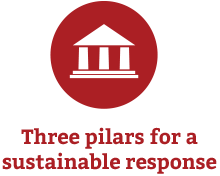
Message 1. The coherence and cohesion of the SDGs is reinforced by three pillars that are fundamental to its achievement: The fight against poverty, the advancement of equality and the promotion of sustained, inclusive and sustainable economic growth, based on full, productive employment and decent work as an effective combination to generate development models that are truly sustainable.

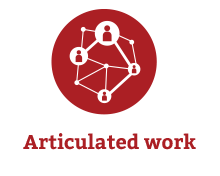
Message 2. The SDGs should be understood as a network of interrelated goals that lead to sustainable development in all its dimensions including economic, social and environmental. This requires all stakeholders that have the ability to influence the expected results to commit and to advance the goals at multiple levels, including at the local, national, regional and global levels.
Message 3. It is necessary to adopt a comprehensive and integrated vision, based on a holistic approach capable of capturing and articulating the relationships and synergies between objectives and interdependent themes; a working model that will require an institutional design adapted to the new challenges and open to the participation of all development actors. For this reason, official funding of the 2030 Agenda should focus on children and adolescents in child labour, a path that should be deepened by the South-South cooperation and the private sector –the latter having an instrumental part to play for its very role in productive development.
Message 4. The Addis Ababa Action Agenda adopted by the UN’s Third International Conference on Financing for Development in July 2015, has taken steps in that direction by recognizing that “Investing in children and youth is critical to achieving inclusive, equitable and sustainable development for present and future generations” and reaffirming “the vital importance of promoting and protecting the rights of all children, and ensuring that no child is left behind” (paragraph 7).
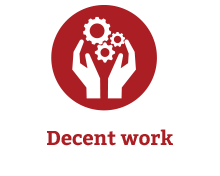
Message 5. The decent work component, expressed in SDG 8 and its related targets, lies at the heart of the 2030 Agenda. The aim is to stimulate economic strategies in which more and better jobs generate the purchasing power that promotes investment, which in turn lifts productivity and brings competitiveness and success in a global market. But this process will not automatically be sustainable nor inclusive. That will require a framework of institutions, organisations, laws and policies, and a culture of social dialogue, to govern the world of work and the functioning of labour markets.
Message 6. SDG 8 provides the essential economic basis for advancing the achievement of Target 8.7 which seeks the elimination of forced labour, ending modern forms of slavery and ensuring the prohibition and elimination of the worst forms of child labour, including recruitment and use of child soldiers, and, by 2025, ending child labour in all its forms. But achieving this target depends both on progress in other targets of other SDGs of strategic relevance.
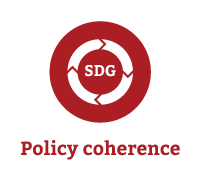
Message 7. Target 8.7, in its aim to “end child labour by 2025,” implies making progress in at least 35 related targets under goals other than Goal 8, which imply strengthening the coherence of public policies at the national and local levels and promoting mutual support at the global and regional levels:

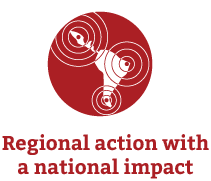
Message 8. The creation of the Regional Initiative Latin America and the Caribbean free of child labour is an expression of that pursuit of mutual support to advance the implementation of the 2030 Agenda. Twenty-seven governments together with employers’ and workers’ organizations are part of this intergovernmental cooperation platform. The Regional Initiative proposes to accelerate the rate of reduction of child labour in Latin America and the Caribbean and reach Target 8.7, by impelling a new generation of policies that can respond effectively to change in the prevailing economic conditions, which have largely driven the reduction of child labour currently exhibited by the region.
Message 9. Based on an approach of policy alignment and ownership by national actors, the Regional Initiative has designed a Public Policy Acceleration Framework that sets out four outcomes:
In order to implement this strategy, the comprehensive analysis of the Sustainable Development Goals is essential, as it provides criteria to promote measures against child labour in broader policies and programmes such as on employment, education, fighting poverty and inequality, agrarian development policies and health, amongst others.
Message 10. In this context, the Regional Initiative Latin America and the Caribbean free of child labour is an ideal platform to unite the political wills and capacities of different key public and private stakeholders who, with the support of international cooperation, can achieve an end to child labour by 2025 and take a key step to building sustainable development the world has set as its collective objective.